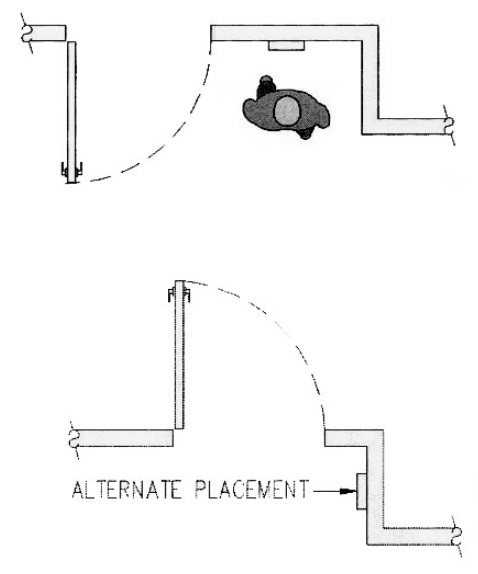Mounting Location and Height [4.30.6]
Placement of tactile signs aside doors (latch-side) provides safety since locating signs on doors that swing out is hazardous. It also provides uniformity which makes signs easier to find by people with little or no vision. (This is why tactile signs are not permitted on doors that swing-in). The 60 inch centerline height also provides uniformity as well as convenience in reading signs from a standing position. Recommendation: At signs containing pictograms or other non-tactile information, this should be measured to the centerline of the raised/ Braille portion so that it is not too low (or high).
Space must be available for a close approach outside the swing of doors. It is important that fixed elements (e.g., drinking fountains) and furnishings not obstruct the approach. The wheelchair maneuvering clearance required on the pull side of doors should allow adequate space.

Where adequate wall space is not available on the latch-side, signs are to be placed on the nearest adjacent wall surface. At double doors or entries with no doors, signs can be placed on either side although attention should be paid to predominant traffic patterns and building-wide uniformity. At double doors, doors that easily swing back 180 degrees can be a hazard unless doors are equipped with closers or the sign is placed beyond the full swing. Where other codes or standards specify a different location (e.g., illuminated exit signs overhead) redundancy is required.

User Comments/Questions
Add Comment/Question